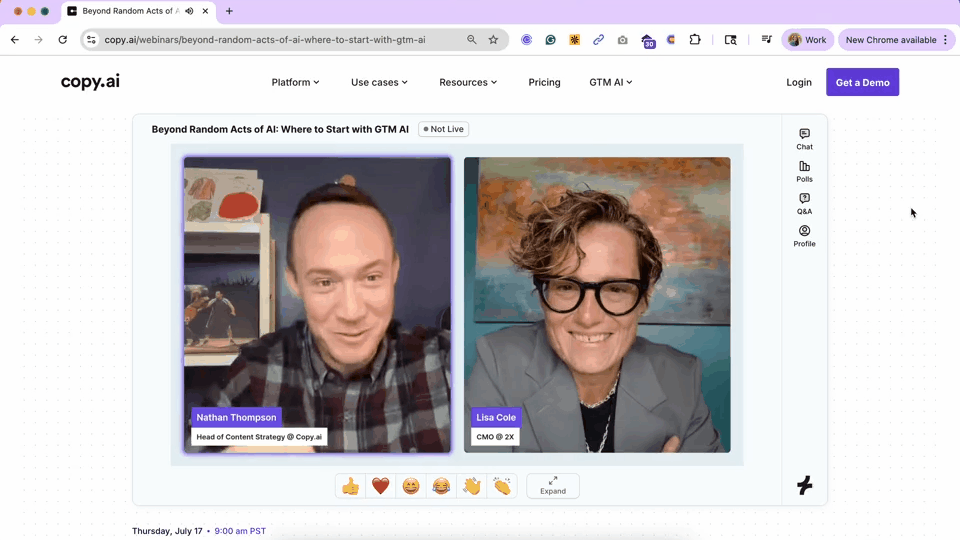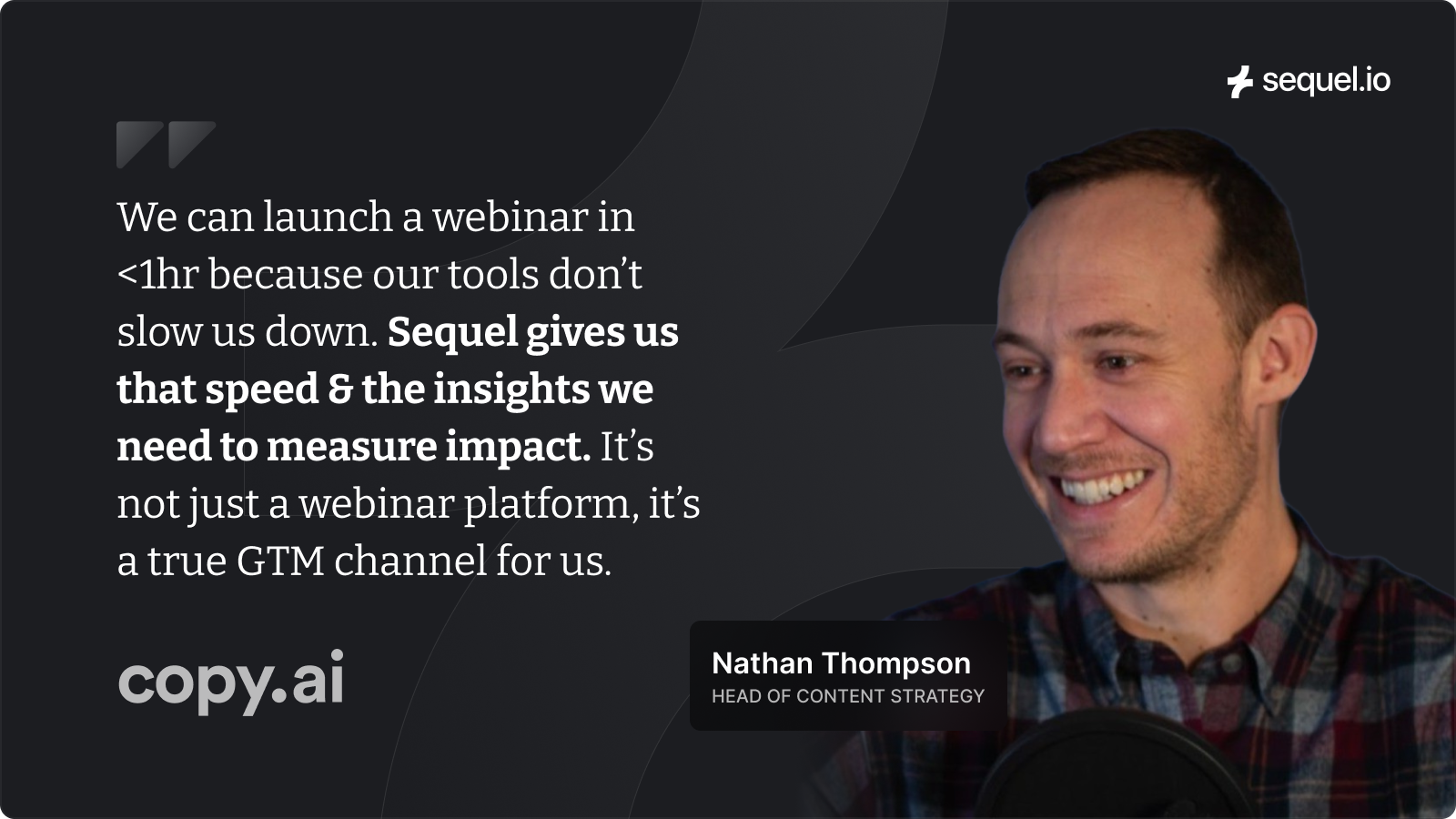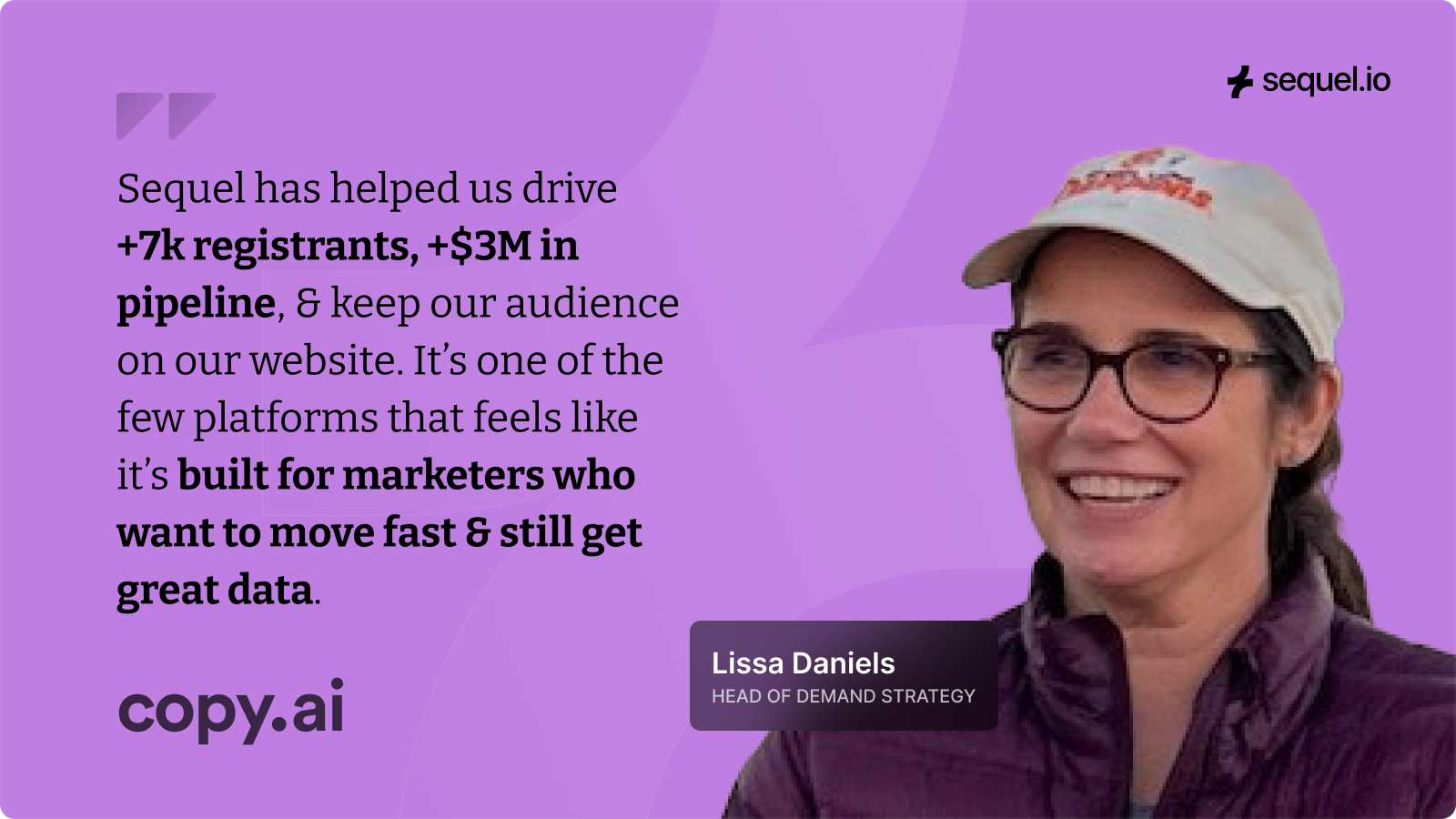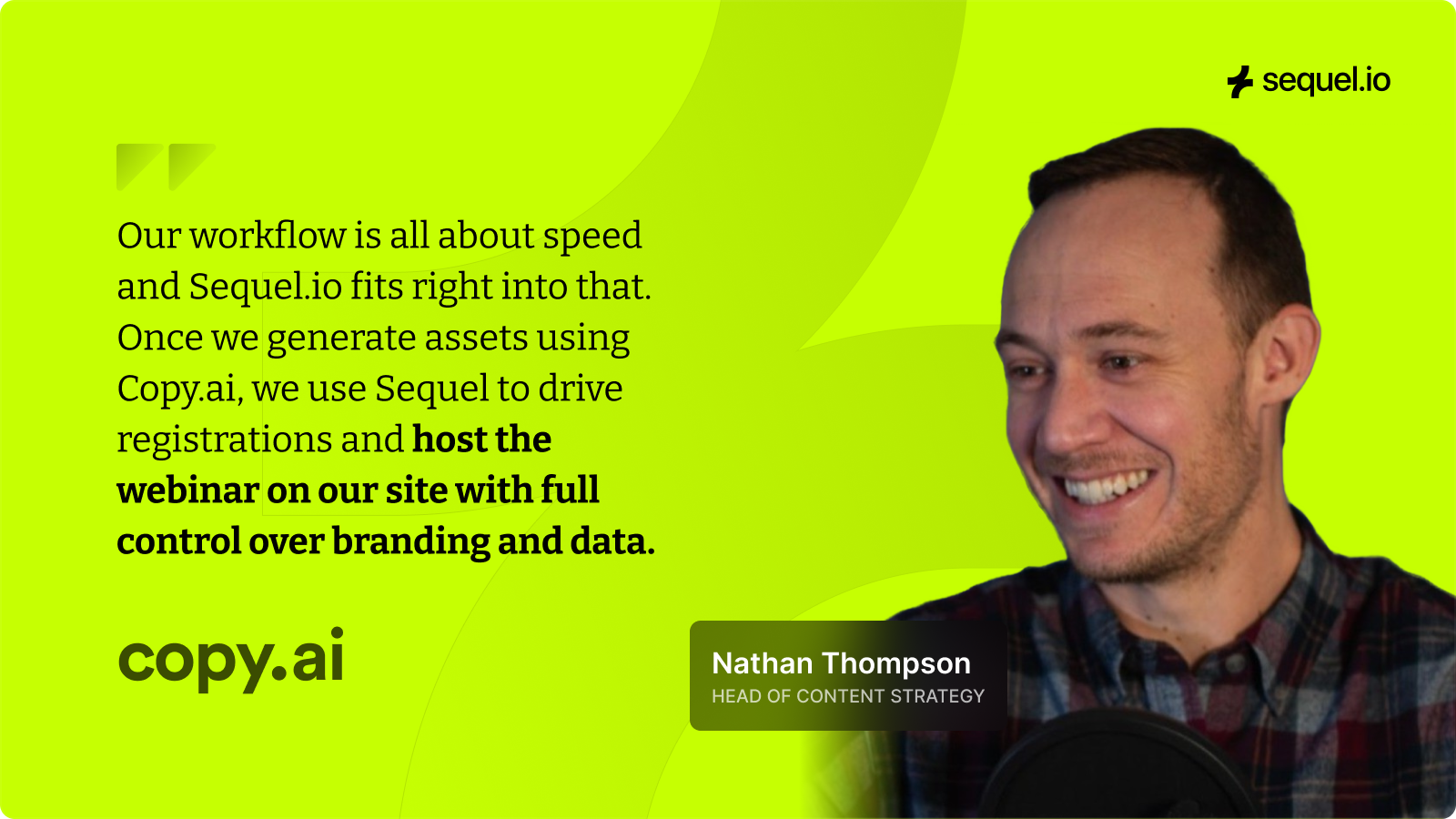Copy.ai’s 1-Hour Playbook for Launching Webinar Campaigns That Convert
Every marketer has a pile of great content that never made it past a draft, a transcript, or a to-do list.
Webinars, especially, tend to disappear into that pile, having been launched late, followed up inconsistently, or repurposed only when there’s time (which there never is). The opportunity to turn one good idea into a high-performing, multi-channel campaign is often missed entirely.
The marketing team at Copy.ai was very well aware of this pain, and they knew they had the tools to do something about it.
If you’re not familiar, Copy.ai is an AI platform that helps teams go-to-market faster. Lissa Daniels (Head of Demand Strategy) and Nathan Thompson (Head of Content Strategy) are two of the minds behind the company’s webinar go-to-market motion and the architects of the playbook you’re about to read.
They built this system not just to save time, but to improve how campaigns are executed end-to-end. The results are hard to ignore:
- +$3M in pipeline generated
- 3,000+ hours spent on-site
- More than 7,000 registrations
- 43% live attendance rate
- Every campaign asset, from landing page to follow-up, created in under 1 hour
This is a tactical guide to how they do it, what tools they use, and how you can start applying the same playbook. Now, let’s dive in!

Copy.ai’s Strategy: Faster Campaigns Without Compromise
The goal of Copy.ai’s webinar program isn’t to get faster and launch as many webinars as possible; it’s to scale what was already working and do it in a way that feels human, useful, and relevant across channels. This supports their go-to-market motion with frequent webinars that engage their audience across the funnel.

Stemming from their content strategy and core pillars, Nathan and Lissa always start their webinar campaign planning with a conversation. A simple recorded brainstorm with relevant SMEs, partners, and/or industry experts.
This recorded conversation is the cornerstone for their entire webinar workflow, from asset creation to sales follow-ups. From the transcript of the call, the team:
- Generates a campaign brief
- Builds out a full set of launch assets
- Publishes the webinar natively on their website
- Automatically generates follow-up and repurposed content
- Optimizes each output for discoverability across SEO, LLMs, and social
This flywheel approach gives the team a rhythm. Instead of chasing deadlines, they created a system that produces consistent results with a repeatable structure. It also allows campaigns to move from being manual one-offs to scalable workflows.
The Tech Stack That Makes It Possible
To move quickly, Lissa and Nathan need tools that talk to each other and don’t slow them down.
Here’s the core stack powering the Copy.ai webinar campaign engine:
- Copy.ai: To create the campaign brief & all event assets
- Sequel.io: To host webinars directly on the website & collect actionable audience data
- Copy.ai + Sequel AI: To automatically generate repurposed content after the event
- Pardot: For campaign & email workflows
- Salesforce: For syncing lead engagement data and routing for sales follow-up

These tools aren’t just part of the stack; they’re deeply integrated into how the team works. For example:
- Copy.ai workflows allow them to generate copy in each speaker’s voice or adjust for tone and persona.
- Sequel.io lets them host the webinar natively on their site (not on a third-party link), keeping the brand experience consistent & allowing for real-time tracking across the site.
- After the session, Copy.ai and Sequel AI help auto-generate article creation, social-ready clips, and beyond.
The entire setup is designed to take one source of truth, the conversation transcript, and use it to power everything downstream.
How They Launch a Full Campaign in Under 1 Hour
Here’s exactly how the Copy.ai team turns a single 30-minute recording into a fully launched campaign:
1. Recording the prep call
Host a 30-minute unscripted behind-the-scenes session between subject matter experts on a focused topic. These conversations shouldn’t be staged. They’re real, raw conversations that surface relevant points of view.
Tip: Before you go into the recorded meeting, make sure you look into the speakers’ background and expertise, as well as familiarize yourself with your core content pillars. This will help you guide the conversation to align with your overarching business goals. Better yet, bring a few prompting questions that will help direct the conversation and spark a creative brainstorm that you can build the webinar off of.
2. Generating the brief
The transcript from your speaker prep call can then be fed into an AI tool like Copy.ai’s brief-building workflow. AI can extract the core narrative, outline the target persona, define what problems the webinar addresses, and shape a “what, why, how” structure.
After it generates your brief, it should become the go-to source material for the entire campaign.
3. Creating all webinar assets
From that webinar brief, Nathan and Lissa have a Copy.ai workflow they created that auto-generates:
- Landing page copy with value prop and registration CTA
- Email invite copy for driving registrations
- Organic social content in both company and speaker voice
- Paid ad variations (LinkedIn, Meta)
- Speaker bios and session descriptions
- Follow-up and thank-you email copy
Again, this is based on your initial speaker conversation and the brief you co-created with AI. If your output isn’t where you want it to be, make sure that your input is providing enough context around the voice, style, or structure you’re trying to achieve.

4. Hosting the webinar on the Copy.ai website
Once the assets are ready, the Copy.ai team publishes the webinar on their website using Sequel.io – as easy as it is to embed an image. This allows the team to host everything from the registration form, live session, and on-demand replay all on one page, creating a cohesive brand experience and allowing better engagement tracking with Audience Insights.
The team doesn’t need to loop in developers or designers. Everything is launched by marketing.
Nathan and Lissa aren’t just intentional about their own efficiency; they are also looking to see how they can create the most seamless and frictionless experience for their audience.
5. Repurposing the webinar
Post-event looks very similar to how the team kicks off the webinar process. They start by taking the live webinar transcript combined with Audience Insights data to:
- Create blogs across funnel stages (introductory, thought leadership, tactical)
- Write recaps and distribute via email and newsletter
- Build internal enablement content, especially for Sales and Customer Success
- Produce LinkedIn clips and speaker-specific quotes highlighting top-engaged moments
- Reuse content for sales follow-up based on the conversation stage
This system allows the team to turn one piece of content into dozens of resources without spinning up a new project every time. It also engages their audience long after the live webinar has ended.

Replicating Copy.ai’s Playbook
What could you create if every webinar were a campaign engine, not a one-off event? You don’t need a giant team but you do need a few essentials:
- A way to capture unscripted conversation
- An AI-based asset creation process
- A connected stack that lets you go from brief to follow-up without bottlenecks
If you’re using webinars as a growth channel or want to, Copy.ai’s system is built to scale. And the results are real:
- +$3M in pipeline generated
- 7k+ attendees
- 43% attendance rate
- 3,000+ hours spent on-site
- 20+ campaign assets created per webinar
- All in under 1 hour
This is what modern marketing execution looks like when strategy, tools, and content workflows actually work together.
If you want to learn how to replicate Nathan and Lissa’s webinar playbook, find time with us and we’ll show you how!
